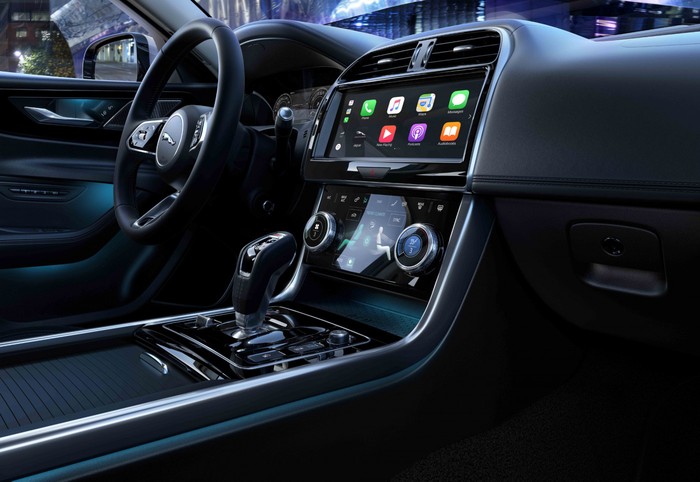
Jaguar explains why it hasn't caught giant touchscreen fever
It argues two smaller screens are better than a massive one.
Tesla arguably started the trend of embedding a massive, iPad-like touchscreen in a dashboard to display the infotainment system when it released the Model S in 2012. Many automakers have followed its example, but Jaguar isn't planning to jump on the bandwagon; not if its lead designer can prevent it from making the leap.
"Not if I can help it," answered Jaguar design boss Ian Callum when asked by Automotive News whether the firm would build cars with a bigger touchscreen. He added that he's more concerned about safety and ergonomics than aesthetics.
"If you're driving 80-90 miles an hour -- and you can in some countries, legally -- you don't want to be flipping around an iPad looking to move your door mirrors or your seat controls. You need to be able to feel your way through the car without looking at it for more than a millisecond," he explained.
Instead of making cars with one giant screen, like Tesla, Volvo, Ford, Ram, Subaru, and Toyota, among others, Jaguar has adopted a dual-screen infotainment system called Touch Pro Duo. It's available in the face-lifted XE and in the I-Pace. The top screen displays the infotainment system, while the bottom screen replaces the dials, switches, and knobs normally used to set or adjust temperature-related functions.
Jaguar isn't alone in its resistance to massive screens. Rival Audi offers several of its cars -- including the A6 and the A7 -- with two separate screens instead of one that's the size of a Dreamliner window.
no